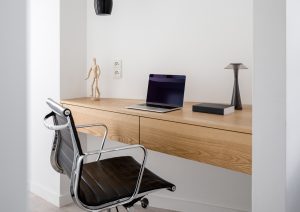If you’re reading this at work, then you’re probably distracted. Don’t worry. You’re not alone.
A 2018 Udemy survey indicates that more than 70 percent of workers in the US feel distracted on the job. Some 16 percent of distracted workers say they always feel unfocused.
In fact, workplace distraction has become something of an epidemic in the modern office. The Australian software developer, Atlassian, says companies are beginning to complain as constant distractions are now costing American businesses around $650 billion a year.

Why You’re Distracted
But who is to blame for all this mindless disruption? After all, the modern workday seems tailor-made to destroy individual focus. Today’s workplace buzzes with excessive emails, pointless meetings, constant interruptions, and social media. The average worker checks their email 36 times an hour and takes 16 minutes to refocus after handling a new email, according to Atlassian.
The software developer says many employees attend over 60 meetings a month. Some 91 percent of employees admitted to daydreaming during these meetings. And most workers say they require about two hours to recover from interruptions from co-workers.
Udemy suggests that the ultimate consequence is a cycle of employee dissatisfaction. Productivity loss causes a longer workday. This, in turn, causes stress and frustration, which eventually leads to a lack of engagement.
How are businesses supposed to tackle this problem? “This is a big question,” says Nancy Snell, a certified professional business coach. “Issues must be addressed culturally and start from the top down.”

“Providing Opportunities”
Many companies adopt no-email or no-meeting days or have stringent policies regarding cell phone use at work. Some employers use a culture of flexibility and remote work to help workers customize their work environment as needed.
Smaller businesses can use employee monitoring systems like Worksnaps for remote employees. The software is a time tracking tool that allows business owners to track employee productivity in real-time.
The Worksnaps Client runs silently in the background and appears as an icon in the taskbar. The application is non-intrusive and has a small CPU and memory footprint.
In the end, however, every employer and office manager should understand that providing a distraction-free workplace isn’t just a management strategy.
The aim is to support employee wellness, work-life balance, employee engagement, and retention suggests Kielly Kuligowski in an article for Business News Daily.
“The important part of any anti-distraction strategy is to avoid micromanaging employees and making them feel distrusted or watched,” Kuligowski writes. “Keep your focus on providing opportunities for employees to do what works best for them in terms of staying focused, and remember that needs will vary.”
Now, if you’re still reading this, then maybe it’s time you get back to work.
What do you think?






